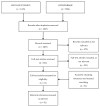Fosfomycin: Pharmacological, Clinical and Future Perspectives
- PMID: 29088073
- PMCID: PMC5745467
- DOI: 10.3390/antibiotics6040024
Fosfomycin: Pharmacological, Clinical and Future Perspectives
Abstract
Fosfomycin is a bactericidal, low-molecular weight, broad-spectrum antibiotic, with putative activity against several bacteria, including multidrug-resistant Gram-negative bacteria, by irreversibly inhibiting an early stage in cell wall synthesis. Evidence suggests that fosfomycin has a synergistic effect when used in combination with other antimicrobial agents that act via a different mechanism of action, thereby allowing for reduced dosages and lower toxicity. Fosfomycin does not bind to plasma proteins and is cleared via the kidneys. Due to its extensive tissue penetration, fosfomycin may be indicated for infections of the CNS, soft tissues, bone, lungs, and abscesses. The oral bioavailability of fosfomycin tromethamine is <50%; therefore, oral administration of fosfomycin tromethamine is approved only as a 3-gram one-time dose for treating urinary tract infections. However, based on published PK parameters, PK/PD simulations have been performed for several multiple-dose regimens, which might lead to the future use of fosfomycin for treating complicated infections with multidrug-resistant bacteria. Because essential pharmacological information and knowledge regarding mechanisms of resistance are currently limited and/or controversial, further studies are urgently needed, and fosfomycin monotherapy should be avoided.
Keywords: antimicrobial activity; fosfomycin; multidrug resistance; pharmacokinetics.
Conflict of interest statement
The authors declare no conflict of interest.
Figures
References
-
- Spellberg B., Guidos R., Gilbert D., Bradley J., Boucher H.W., Scheld W.M., Bartlett J.G., Edwards J., Jr., The Infectious Diseases Society of America The epidemic of antibiotic-resistant infections: A call to action for the medical community from the Infectious Diseases Society of America. Clin. Infect. Dis. 2008;46:155–164. doi: 10.1086/524891. - DOI - PubMed
-
- World Health Organization . Antimicrobial Resistance: Global Report on Surveillance 2014. World Health Organization; Geneva, Switzerland: 2014.
Publication types
LinkOut - more resources
Full Text Sources
Other Literature Sources




